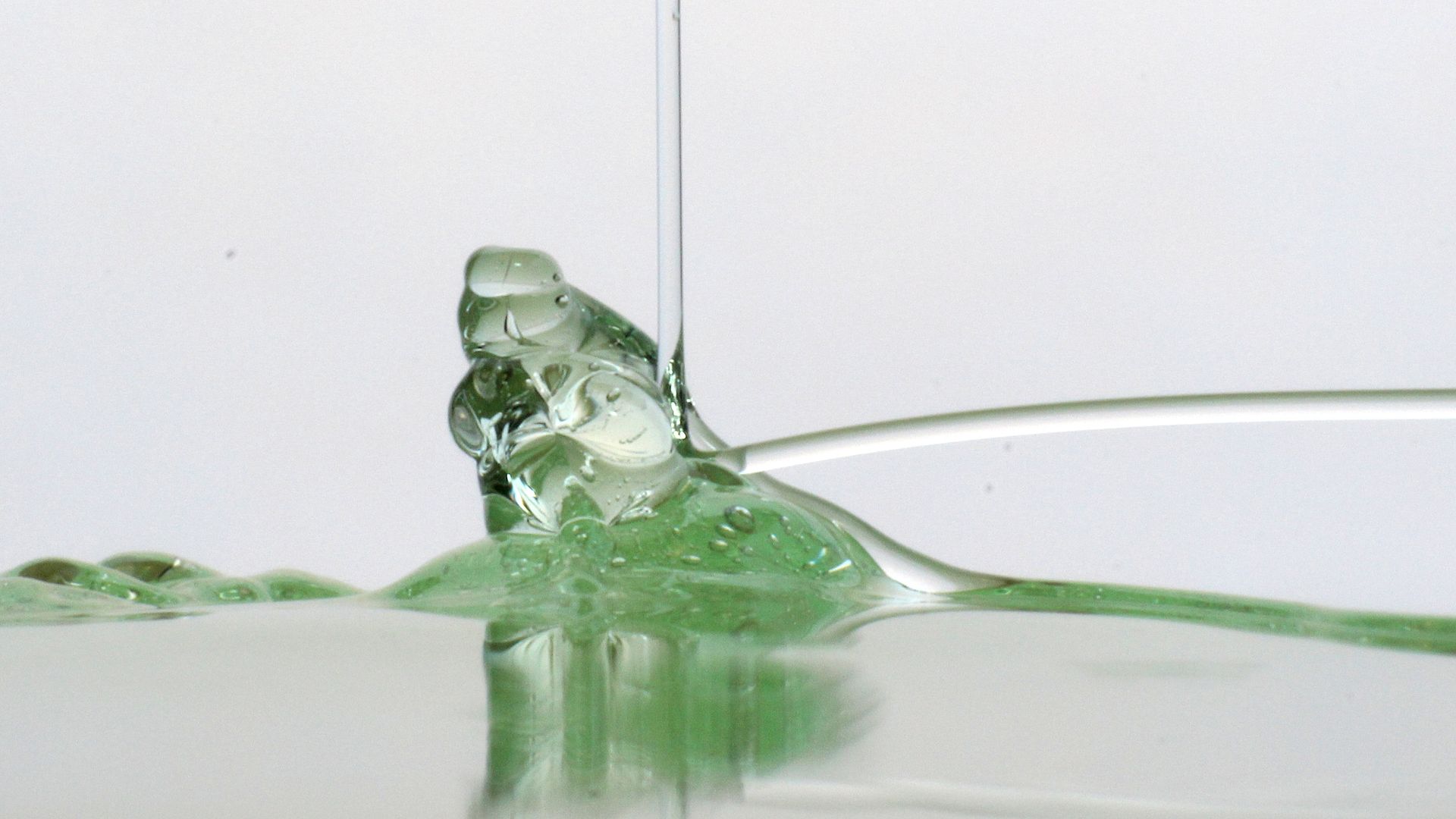Bouncing a Stream: The Kaye Effect
March 13, 2018
Shear Wonder

Image Credit: Wiki user PascalWink (CC BY-SA 3.0)
What's Going On Here?
Have you ever been in the shower, squirting some body wash or shampoo onto your hand, and noticed a "jet" shoot out of the blob? You're witnessing the Kaye effect, a bizarre bit of fluid dynamics that happens thanks to the soap's slippery nature and shear-thinning properties.
If you're a home science enthusiast, you're probably familiar with "shear-thickening" fluids like oobleck, the famous corn starch mixture that flows like a liquid until it's hit with a lot of force, when it firms up. Shear-thickening fluids are called "non-Newtonian" fluids, which means that properties like how easily they flow can change depending on the circumsmtances. Shear-thickening isn't the only kind of non-Newtonian fluid, however; there's also "shear-thinning".
If shear-thickening fluids get more solid when force is applied to them, you can probably guess what defines a shear-thinning fluid: Ordinarily, they flow slowly, with a lot of viscosity—but applying a force, we can thin them out. Ketchup is one of the most common examples of a shear-thinning fluid, which is why it's so hard to get out of a glass bottle. However, a lot of liquids have this property, including most liquid soaps. Blood is also a shear-thinning fluid, which is handy; when the heart contracts to pump blood through your body, the blood drops in viscosity, reducing the amount of stress this puts on your veins and arteries.
When the soap hits a surface from a great enough height, the force of the impact thins out the bottom layer, creating a thin coating that prevents the rest of the stream from coming in proper contact with the surface. If the surface is angled, this layer can dimple and create a "ramp" that redirects the fluid's momentum and turns a drizzling stream into a fountain-like jet! Part of the reason this works is because the attractive forces between the molecules in the liquid stream are stronger than the forces trying to stick the stream to the surface.
With a little patience, this phenomenon can be reproduced at home. The experts recommend pouring from a height of about eight inches onto an inclined surface, with a very thin stream—about half a millimeter—so a squeeze bottle will come in handy. Get messy and try it for yourself!














